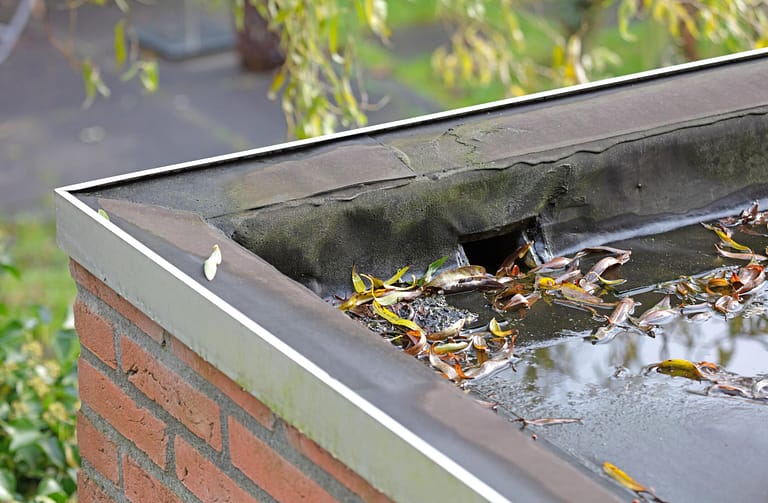
Snow-covered roofs may create a picturesque winter scene, but they can also pose significant risks to your home’s structural integrity if not properly managed. Removing snow from your roof is essential to prevent ice dams, roof collapses, and water damage. In this guide, we’ll explore the best practices for safely removing snow from your roof, ensuring both your safety and the protection of your home.
Inside this blog:
- How to correctly assess the situation before removing snow from your roof
- 3 safe roof snow removal techniques
- When to seek professional help
Keep reading to learn more about safe ways to effectively remove snow from your roof so you can have a comfortable winter and a protected home!
Assessing the Situation Before Removal
Before you begin removing snow from your roof, take the time to assess the situation carefully. Consider factors such as the amount of snow accumulation, the pitch and slope of your roof, and any existing ice dams or obstructions. Additionally, evaluate the condition of your roof and gutters to identify any areas of concern, such as loose shingles or damaged flashing, that may require attention before snow removal.
Check Weather Conditions
Before you embark on the task of removing snow from your roof, it’s crucial to take a moment to assess the weather conditions. Consult the weather forecast and observe the current weather conditions in your area.
- It’s advisable to avoid removing snow during periods of heavy snowfall, as this can not only make the task more challenging but also increase the risk of accidents and injuries.
- Similarly, strong winds can pose a danger, especially when working on a roof, as they can cause snow to drift and reduce visibility.
- Additionally, icy conditions can make surfaces slippery, making it more hazardous to maneuver on your roof.
By waiting for more favorable weather conditions, you can ensure a safer and more manageable snow removal process.
Inspect Roofing Materials

Another crucial aspect to consider before removing snow from your roof is the type of roofing materials you have. Different roofing materials have varying degrees of durability and susceptibility to damage from snow removal techniques.
- For instance, asphalt shingles are relatively delicate and can be easily damaged by aggressive snow removal methods such as scraping or shoveling.
- On the other hand, metal or slate roofs are more robust and can withstand more forceful snow removal techniques.
- Therefore, it’s essential to take note of the type of roofing materials on your roof and adjust your snow removal methods accordingly.
Opting for gentler techniques, such as using a roof rake or soft-bristled broom, can help prevent damage to your roof and extend its lifespan.
❄️ 3 Safe Snow Removal Techniques
When it comes to removing snow from your roof, safety should be your top priority. Use caution and follow these safe snow removal techniques to protect yourself and your home from potential harm.
1. Use a Roof Rake
When using a roof rake to remove snow from your roof, it’s crucial to follow proper safety guidelines to avoid accidents or injuries. Stand securely on the ground and extend the roof rake up onto the roof, using the handle to gently pull snow down and away from the roof’s edge.
Start from the edge of the roof and work your way up gradually, taking care not to apply too much pressure to prevent damage to the roofing materials underneath.
Additionally, be mindful of your surroundings and avoid standing directly beneath the area you’re clearing to minimize the risk of injury from falling snow or ice.
2. Avoid Using Metal Tools
While metal shovels or tools may seem sturdy and effective for removing snow and ice, they can pose a risk of damage to your roof’s surface. Metal implements are more likely to scratch or puncture roofing materials, leading to potential leaks and structural damage.
To protect your roof from harm, opt for plastic or rubberized shovels that are gentler on the surface and less likely to cause damage. These tools can effectively remove snow and ice without compromising the integrity of your roof.
3. Clear Gutters and Downspouts

Don’t overlook the importance of clearing snow and ice from your gutters and downspouts to prevent potential water damage. Clogged gutters can lead to ice dams, which can cause water to back up and seep under the roof’s shingles, resulting in leaks and water damage to your home’s interior.
Use a sturdy ladder and a gutter scoop to safely remove debris from gutters and downspouts, ensuring that water can flow freely away from your roof and foundation. Take your time and work methodically, being careful not to overreach or lean too far while clearing gutters to avoid accidents or falls.
When to Seek Professional Help
While many homeowners can safely remove snow from their roofs using the techniques outlined above, there are situations where professional assistance may be necessary.
- Excessive Snow Accumulation: If your roof has a significant amount of snow accumulation or if you’re uncomfortable with the idea of removing snow yourself, it’s best to hire a professional roofing contractor with experience in snow removal.
- Roof Damage: If you notice signs of roof damage, such as sagging or creaking sounds, during or after snow removal, stop immediately and contact a roofing professional to assess the situation. Attempting to remove snow from a compromised roof can exacerbate the damage and pose serious safety risks.
- Steep or High Roofs: Steep or high roofs can be challenging and dangerous to navigate, especially in snowy or icy conditions. If your roof has a steep pitch or is difficult to access, leave snow removal to the professionals who have the necessary equipment and expertise to work safely at heights.
🏡 Protect Your Home With Roof Snow Removal
Removing snow from your roof is a necessary task to protect your home from winter weather hazards, but it’s essential to approach it with caution and safety in mind. By assessing the situation, using safe snow removal techniques, and knowing when to seek professional help, you can keep your roof clear of snow and ice while minimizing the risk of accidents and damage to your home. Stay safe and stay warm!
Contact our expert roofing contractors at Shingle and Metal Roofs to experience top quality customer service and dedicated workmanship. We can’t wait to hear your vision for your next roofing project–let’s get the ball rolling!






